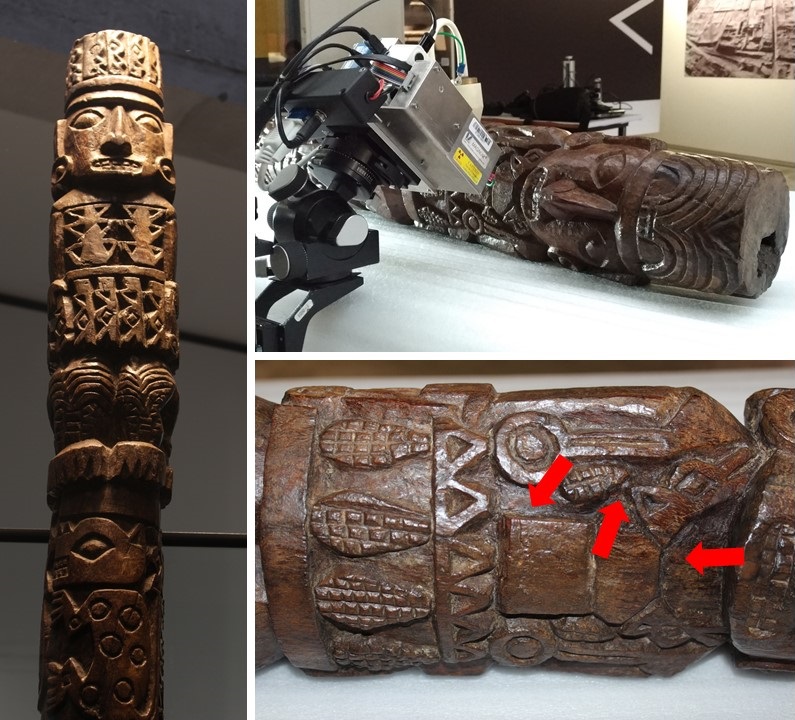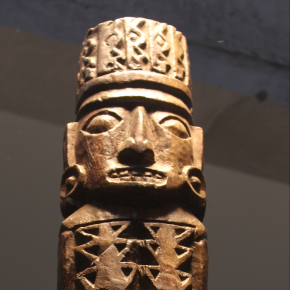
The colours of the Pachacamac idol, an Inca God, finally revealed
Researchers from the CNRS, Sorbonne Université, université Paris 1 Panthéon-Sorbonne, the Muséum National d'Histoire Naturelle and the Musée du Quai Branly - Jacques Chirac have shown colours formerly painted on the Pachacamac idol, a 15th century Inca God and oracle. Paired with the first carbon 14 dating of the object, these results published in PLOS ONE on 15 January 2020 shed light on colour practices, and how important they were in the Andes at that time.
The legend of Pachacamac will not soon die. Since the 16th century, Spanish chroniclers have said that Hernando Pizarro had destroyed the idol of the deity when he conquered the Inca Empire in the Andes. But a carved wooden post representing Pachacamac was discovered on the archaeological site of the same name in 1938, so it was considered that the Spaniards may have been wrong in thinking that the idol had been completely destroyed. Now we have a new mystery! What is the nature of the red colour observed on the object? Is it blood residue, the remnants of sacrificial practices?
Thanks to close collaboration with the museum at the Pachacamac archaeological site in Peru, an international research team1 has been able to conduct never-before-seen analysis — non-invasive and non-destructive analysis — of the idol’s polychromy. They first revealed that red was not the only colour present on the piece of wood: we see white on the teeth of a personage and yellow on some headdresses.
What is even more interesting is that the researchers were able to determine the chemical composition of the pigments and show that red is not blood but mercury, no doubt from cinnabar, a mercury mineral known in that region for over 2000 years. Cinnabar sources in the Andes are 400 km from Pachacamac, at high altitude. So the idol was painted intentionally, no doubt to show economic and political power by carrying a pigment from a faraway region even though others were available on site.
Finally, the Pachacamac idol was carbon-14 dated for the first time. The object was made around 731 AD, probably by the Waris, i.e. about 700 years before the height of the Incan empire. This confirms that the Pachacamac site already had local ritual importance before the Incas arrived. They then made it one of their main pilgrimage centres, to the point that it housed an oracle that advised the emperor himself.
These results are part of a broad study of painted objects and walls at the Pachacamac archaeological site that aims to better understand the materials, practices and knowledge related to colour in the Andes during the pre-Hispanic period.

© Marcela Sepulveda/Rommel Angeles/Museo de sitio Pachacamac
Unraveling the Polychromy and Antiquity of the Pachacamac Idol, Pacific coast, Peru. Marcela Sepúlveda, Denise Pozzi-Escot, Rommel Angeles Falcon, Nicolas Bermeo, Matthieu Lebon, Christophe Moulhérat, Philippe Sarrazin and Philippe Walter. PLOS ONE, January 15 2020. https://journals.plos.org/plosone/article?id=10.1371/journal.pone.0226244


